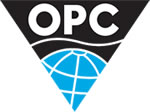Middle East / Africa
Country profile: Egypt
| Location: | Northern Africa, bordering the Mediterranean Sea, between Libya and the Gaza Strip, and the Red Sea north of Sudan, and includes the Asian Sinai Peninsula |
| Climate: | desert; hot, dry summers with moderate winters |
| Terrain: | vast desert plateau interrupted by Nile valley and delta |
| Size: | 1001450 sq. km total (Land area: 995450 sq. km Water area: 6000 sq.km) |
| Population: | 81,713,517 (July 2008 est.) |
| Languages: | Arabic (official), English and French widely understood by educated classes |
| Government: | republic |
| Capital city: | Cairo |
| Legal system: | based on Islamic and civil law (particularly Napoleonic codes); judicial review by Supreme Court and Council of State (oversees validity of administrative decisions); accepts compulsory ICJ jurisdiction with reservations |
| Currency: | Egyptian pound (EGP) |
| Licensing: |
Country profile
Energy will continue to play an important role in Egypt's economy in coming years. Though Egypt’s net exports of crude oil and petroleum products have declined in recent years, higher prices on world markets have pushed Egypt's oil revenues upward. The country also began exports of liquefied natural gas (LNG) in January 2005, adding to its hydrocarbon revenues. Additionally, Egypt's economy is continuing its gradual recovery from the declining growth rates it experienced in 2001 and 2002, but with a growth rate still far below what was achieved in the 1990s. The country's real Gross Domestic Product (GDP) grew 4.9 percent in 2005, after achieving real growth of 3.6 percent in 2004. Real GDP growth is forecast at 5.7 percent for 2006. Remittances from Egyptian workers in the Persian Gulf region have risen with higher oil prices, and tourism has recovered to near pre-September 2001 levels.
In a normal year, tourism revenues account for about 5 percent of Egypt's GDP, and are among the country's five main sources of hard currency inflows (the others being remittances from Egyptian workers abroad, hydrocarbons exports, Suez Canal tolls, and foreign aid). Over the long term, Egypt's macroeconomic prospects may improve, but Egypt's main challenge is reducing unemployment. Unofficial estimates put Egypt's unemployment rate in the 15-25 percent range, roughly twice the official figure. The government plans to accelerate its program for the privatization of state-owned enterprises (SOEs), though to date, the privatization program has moved slowly because of large SOE debt and severe overstaffing.
Energy production and consumption
| Oil | Gas | |
| Production: | 688,100 bbl/day (2005 est.) | 40 billion cu m (2005 est.) |
| Consumption: | 635,000 bbl/day (2005 est.) | 32 billion cu m (2005 est.) |
| Exports: | 152,600 bbl/day (2004 est.) | 7 billion cu m (2005 est.) |
| Imports: | 69,860 bbl/day (2004 est.) | |
| Reserves: | 3 billion bbl (2007 est.) | 1 trillion cu m (1 January 2006 est.) |
| Major fields: |
Egypt - recent news
| 25 Nov 25 |
Egypt: The President of Egypt Abdel Fattah El-Sisi meets Eni CEO Claudio Descalzi The President of the Arab Republic of Egypt, Abdel Fattah el-Sisi met with Eni Chief Executive Officer Claudio Descalzi to discuss Eni's strong partnership with Egypt and the upcoming new initiatives. During the meeting, Eni CEO Descalzi reviewed the company’s recent investments in the Country’s Upstream sector, which helped to confirm Eni’s role as Egypt’s top oil and gas producer. |
| 03 Nov 25 |
Egypt: TAG Oil awarded PSA for development of Abu Roash 'F' reservoir in Southeast Ras Qattara Concession TAG Oil has received approval to enter into a petroleum services agreement ('PSA') by the Egyptian National Petroleum for Exploration and Development Company ('ENPEDCO') for the development of the unconventional Abu Roash 'F'('ARF') reservoir within the Southeast Ras Qattara concession (the 'SERQ Concession') in Egypt’s Western Desert. |
| 27 Oct 25 |
Egypt: Eni and the Bioenergy Association for Sustainable Development of Egypt sign agreement on Carbon Offset Solutions and Bioenergy Projects Eni and the Bioenergy Association for Sustainable Development, affiliated with the Ministry of Environment of the Arab Republic of Egypt, signed in Cairo today a cooperation agreement to prepare a comprehensive feasibility study for establishing biogas production units based on the treatment of animal and agricultural waste. |
| 27 Oct 25 |
Egypt: QatarEnergy acquires new exploration interest offshore Egypt QatarEnergy has acquired a 40% stake in the North Rafah offshore block, located in the Mediterranean Sea, off the northeastern coast of Egypt, with Eni (the Operator) retaining the remaining 60% interest. |
| 24 Oct 25 |
Egypt: Capricorn announces trading and payment update Capricorn has announced that it has received $50m from the Egyptian General Petroleum Corporation (EGPC). Capricorn continues to invest in its Egyptian asset base and has fulfilled all exploration commitments on its legacy acreage. |
Egypt - more news
Other countries in this region
- Algeria,
- Angola,
- Bahrain,
- Benin,
- Botswana,
- Burundi,
- Cameroon,
- Central Africa Republic,
- Chad,
- Comoros,
- Congo (Brazzaville),
- Congo (Democratic Rep.),
- Cote d'Ivoire,
- Djibouti,
- Equatorial Guinea,
- Eritrea,
- Ethiopia,
- Gabon,
- Gambia,
- Ghana,
- Guinea (Republic),
- Guinea Bissau,
- Iran,
- Iraq,
- Israel,
- Jordan,
- Kenya,
- Kuwait,
- Lebanon,
- Liberia,
- Libya,
- Madagascar,
- Malawi,
- Mali,
- Mauritania,
- Mauritius,
- Morocco,
- Mozambique,
- Namibia,
- Niger,
- Nigeria,
- Oman,
- Palestine,
- Qatar,
- Rwanda,
- Sao Tome,
- Saudi Arabia,
- Senegal,
- Seychelles,
- Sierra Leone,
- Somalia,
- Somaliland,
- South Africa,
- South Sudan,
- Sudan,
- Syria,
- Tanzania,
- Togo,
- Tunisia,
- Uganda,
- United Arab Emirates,
- Western Sahara,
- Yemen,
- Zambia,
- Zanzibar,
- Zimbabwe











